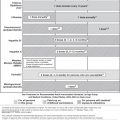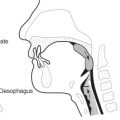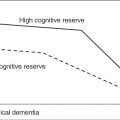Introduction
As individuals with multiple sclerosis (MS) grow older, not only does this condition typically lead to more disability,1 but often they acquire additional unrelated medical problems such as diabetes, hypertension, hyperlipidaemia, cardiac and peripheral vascular diseases, osteoporosis and dementia. Consequences of MS accumulate, including paresis, neurogenic bowel and bladder, depression, cognitive decline, fatigue, gait imbalance and pain. Engagement in appropriate health behaviour is often limited. The death of a spouse may contribute to social withdrawal and loss of cognitive stimulation. Thus, advanced MS in an ageing individual may present formidable challenges, and treating one problem may make others worse. These numerous medical issues are often beyond the scope of a single healthcare provider, whatever the specialty. A person with MS, faced with advancing age and disability, may be obliged to engage multiple providers who schedule numerous appointments. Accessing these appointments may become near impossible owing to loss of the ability to drive, inadequate accessibility of public transportation and doctors’ offices and lack of social networks necessary for assistance. Persons with MS may live without significant others or relatives who could provide logistical, emotional and social support. They may lack the resources to hire personal assistants or their significant others may also have medical problems that render them incapable of helping. Deterioration, depression and social isolation may be inexorable. Nursing homes rarely provide optimal care, but may prove the only viable, albeit unsatisfactory, alternative.
This picture is reality for many patients. Some have a more benign course, with minimal disability decades after the diagnosis and few comorbidities.2 However, for the majority a comprehensive paradigm that engages persons with MS and their network in the healthcare process is required. This approach does not gloss over clinical features such as fatigue but addresses all manifestations of MS and comorbidities in an all-encompassing fashion. It seeks to integrate numerous providers in ongoing multilateral communication. Such a team will likely include internists, neurologists, nurses, psychiatrists, psychologists, rehabilitation therapists, social workers and urologists, among others. It optimizes access to insurance-covered home care and utilizes other community resources, for example, from the National MS Society, independent living centres or other organizations. Such an approach can significantly enhance quality of life.
The impact of disease-modifying drugs such as glatiramer acetate and beta-interferons on the gestalt of the ageing person with MS is only beginning to be felt. Such agents reached the market starting in 1993. People who turn 60 years of age in 2011 were in their early 40s when they would have received their first dose. Thus they could have lived with MS for up to 20 years before benefiting from these drugs.3, 4
Although there is no cure for MS, the advent of these drugs fostered optimism among patients and healthcare providers that devoting time and energy in clinical practice, in clinical trials and the laboratory ameliorates outcomes. Although, as will be discussed here, access to optimal care remains limited for many affected individuals, multidisciplinary MS centres have been established in larger towns and cities, where the many needs of patients are being recognized and met.
This chapter discusses the major clinical entities and ancillary studies that must be considered in the care of persons with MS and focus on the health of individuals with MS as they age. It assumes that the disease onset is not recent and that the diagnosis is valid and confirmed. For a comprehensive discussion of the aetiology, pathogenesis, pathology, clinical presentation, ancillary studies and use of disease- and symptom-modifying drugs, the reader is referred to standard texts.
Pathophysiology, Aetiology and Epidemiology
With a putative overall prevalence of 1 in 1000, some 2.5 million persons worldwide are affected by MS, about 400 000 in the USA, with 10 000 new diagnoses each year.5 The prevalence varies considerably with distance from the equator and between different countries and ethnic origins.
MS has been defined as an autoimmune disease in which inflammation is sustained by autoreactive T cells directed against components of myelin.6 A broader concept accounts for the influence of B lymphocytes, for modulation by cytokines and their receptors, for an aetiological role of a primary oligodendropathy and the notion that not only clinically different, but even clinically identical, forms of MS may result from different pathomechanisms.7 Cytokines not only function as immune modulators but also impact clinical features, including fatigue and cognition. Inflammatory cells including macrophages and lymphocytes cross the blood–brain barrier to enter the central nervous system (CNS). There, in cooperation with cytokines and antibodies, they recognize myelin and axonal antigenic targets and damage them functionally and structurally, thus causing slowing of nerve conduction, demyelination and axonal loss in the white and grey matter, which presents as clinical attacks with varying and multiple symptoms and signs. During remission, inflammatory oedema diminishes and demyelinated axons are repaired. However, irreversible destruction of axons starts soon after onset and contributes to incomplete recovery from attacks and disease progression.
Numerous microbial antigens have been implicated as inducers of autoimmunity, including viruses which may damage oligodendrocytes, such as Epstein–Barr virus (EBV).8, 9 Recently infection with the herpes zoster virus has been established as a risk factor.9a Sunlight exposure, vitamin D levels and tobacco use are independent risk factors, among others.10, 11 Evolving concepts include the notion of chronic cerebrospinal venous insufficiency.12 Beyond the role of autoimmunity, MS likely reflects complex polygenetic–environmental interactions. The risk in families increases with relatedness.13 The prevalence is related to increasing distance from the equator. The risk conveyed by ethnic origin is modified by geographic origin.
Clinical Spectrum, Diagnosis and Treatment
As MS lesions can affect any anatomical region in the CNS, clinical features may reflect involvement of sensory and motor systems in the brain or spinal cord and of motor, sensory, visual, cerebellar, brainstem, bladder, bowel, sexual, cognitive and emotional functions. Fatigue, sleep disturbances and hormonal anomalies are common but underdiagnosed.
Taking a history may require repeated follow-up questions because the language that patients choose is often idiosyncratic. Open-ended questions yield more valid information. It is helpful to point out the distinction of positive (cramps, spasticity, tingling, vertigo) versus negative symptoms (weakness, numbness, imbalance), both in order to ensure that what the patient tries to convey and what the provider documents as a symptom are not at odds and in order to facilitate rational treatment and realistic expectations of the likelihood of success. For instance, some people use the word numbness to describe tingling or mild weakness rather than sensory loss; some experience tingling as painful, others as a nuisance. Although positive and negative symptoms often go hand in hand, patients should be aware that a medication can alleviate tingling but not numbness.
The diagnosis of relapsing MS requires that a person display dissemination in time and space, for example, optic neuritis and vertigo 3 months apart, for which no better alternative explanation is apparent, such as two separate cerebrovascular accidents affecting different CNS regions in an elderly smoker with hypertension, diabetes and hyperlipidaemia.14 The accumulation of comorbidities with age (see below) may render a new diagnosis of MS and also the interpretation of new symptoms and signs in the case of an established diagnosis more difficult. Also, when primary progressive MS is entertained, it is important also to consider cervical myelopathy and primary lateral sclerosis, to give just two examples.14
Ancillary Studies
Imaging studies such as magnetic resonance imaging (MRI) serve different purposes at different disease stages.15 At onset, MRI can confirm the diagnosis and rule out other conditions. MS-like MRI lesions occur in many other conditions, including vascular disease, migraine and vitamin B12 deficiency. MRI can relate the clinical presentation to plaque location and quantitate disease activity, thus providing evidence of therapeutic efficacy. As a person with MS ages and clinical manifestations evolve, CNS imaging can evaluate for intercurrent illnesses such as subdural haematoma (e.g. after a fall), stroke, dementia or mass lesions. Plaques are often ovoid, concentrate in the corpus callosum and periventricular white matter and extend peripherally. New plaques show T2 hyperintensity and enhance with gadolinium. Later they no longer enhance, but maintain T2 hyperintensity and may become T1 hypointense, the so-called black holes which indicate axonal loss, gliosis and demyelination. White matter lesions are easier to detect than those in the grey matter. Brain atrophy starts shortly after onset, results from demyelination and axonal loss and is accelerated in progressive MS, but slowed by disease-modifying drugs. Serial MRIs reveal a ratio of subclinical to clinical lesions of 5:1. The relationship between brain volume, clinical and MRI exacerbations and disability is beyond the scope of this chapter. Impaired renal function is a risk factor for gadolinium contrast-associated nephrogenic system fibrosis. When contrast is required, its dose should be minimized and alternative contrast agents considered.
Cerebrospinal fluid (CSF) analysis reveals CNS inflammation and may show lymphocytic pleocytosis, protein elevation and evidence of abnormal CNS immunoglobulins.16
Evoked potential studies (EP) are abnormal in 70% (somatosensory EP), 90% (visual EP) and 80% (brainstem auditory EP) and can serve to provide evidence for subclinical involvement of functional pathways, in particular when MRI is normal.17
Certain blood tests can confirm that no other more appropriate or concurrent diagnosis is warranted, including erythrocyte sedimentation rate, C-reactive protein, rheumatological assays, vitamins B12 and D, folate, thyroid function, infections such as syphilis, Lyme disease and hepatitis, HgA1c and urine analysis and culture.
Clinical Subtypes
Multiple forms of demyelinating inflammatory CNS disease can be distinguished which differ in pathogenesis, clinical manifestations and treatment options.18
At onset, 85% of individuals have relapsing–remitting MS (RRMS), with attacks about every 2 years, characterized by a fairly well-defined deterioration in neurological status followed by variable recovery. Two to three times as many women as men are affected. The typical age at diagnosis is 20–50 years. MS attacks typically evolve from first symptom to maximum deficit over 1 day to 1 week, although onset may be faster or slower. Remission from maximum deficit to maximum improvement usually occurs over 1–3 months, but again may be slower or faster. Some symptoms and signs are more likely to improve than others: Sensory symptoms remit completely in >75% of cases. Monoparesis or hemiparesis remits completely in 50%, but fewer than 20% of patients with tetraparesis or paraparesis recover to normality. With sphincter symptoms, only 15% regain complete control. Resolved symptoms can manifest again with intercurrent illnesses or heat exposure (Uthoff phenomenon). About 50% of patients after 10 years and about 90% after 25 years no longer experience relapses and remissions but progressively accumulate disability: they have developed secondary progressive MS (SPMS), because cumulative and ongoing CNS damage has surpassed a critical threshold, for example, the oligodendrocyte progenitor pool and intact tissue can no longer compensate. In progressive relapsing MS (PRMS), relapses are superimposed on a chronic progressive course already at onset.
FDA-approved subcutaneous or intramuscular beta-interferons3 and subcutaneous glatiramer acetate4 reduce the frequency of MS attacks and of disease activity and slow disease progression and brain atrophy. In cases of disabling MS attacks, intravenous or oral methylprednisolone is indicated to hasten recovery. FDA-approved mitoxantrone and natalizumab may be used to ‘rescue’ patients non-responsive to more benign drugs. Potentially life-threatening side effects, including acute myelogenous leukaemia and cardiotoxicity, and opportunistic infections, respectively, must be balanced against their efficacy. Other chemotherapeutic agents such as cyclophosphamide, methotrexate, mycophenolate mofetil and azathioprine, although not FDA approved, can also be considered for selected patients.
Primary progressive MS (PPMS) accounts for 10–15% of patients: relapses and remissions do not occur. Spinal cord features predominate clinically and by MRI. Onset is later and men and women are equally affected. The distinction of PPMS and SPMS is important because no drugs have been found effective in PPMS, but challenging because 28% of individuals with a progressive course eventually experience relapses.19 Other subtypes refer to disease stage such as clinically isolated syndrome (CIS) and specific presentation and pathomechanisms such as neuromyelitis optica (Devic syndrome, NMO) and transverse myelitis (TM). The severity and completeness of spinal cord involvement in TM and NMO typically are more dramatic than in classical MS.
Patients with so-called ‘benign’ MS and little disability decades after the diagnosis typically have a monosymptomatic course without spinal cord features, rare exacerbations, onset at a young age and few lesions by MRI. However, these characteristics do not allow a prediction of such a course in a given individual and a decision against disease-modifying drugs must be individualized.20
Visual, Brainstem and Cerebellar Dysfunction
The optic nerves are affected in over 60% of patients. Optic neuritis is a common presenting feature. As new onset optic neuritis is not common in older adults, readers are referred to standard texts for a detailed discussion. Symptoms include blurring of variable severity, scotomata, impaired colour perception and eye pain worse with eye movement.
Common cerebellar manifestations include nystagmus, scanning dysarthria, intention tremor of the limbs, ataxia, dysarthria and titubation. Dysarthria can also result from cerebral and brainstem lesions. Severe tremor can be extremely disabling and is very difficult to treat pharmacologically. Counterweights attached to the arm can reduce its amplitude and facilitate activities of daily living such as eating. Ataxia is amenable to physical (PT) and occupational therapy (OT).
Brainstem lesions can cause neurological manifestations by disrupting motor, sensory and autonomic fibre tracts, the nuclei and intra-axial fibres of cranial nerves and connecting fibres between nuclei. Eye movement abnormalities including nystagmus, internuclear ophthalmoplegia and diplopia result from lesions that affect the third, fourth and sixth cranial nerves, their nuclei and connecting fibres. Even subtle manifestations such as impaired pursuit and nystagmus can interfere with reading and driving and must be differentiated from decreased visual acuity. The seventh cranial nerve and nucleus involvement resembles Bell palsy, but may be bilateral. Owing to its proximity, the sixth cranial nerve is often affected simultaneously. Vertigo is common in MS and with ageing in general and can be very disabling. Modestly effective drugs such as meclizine can compromise alertness and cognition. When there is a positional component, the Epley particle repositioning manoeuvre should be considered.
Sensory Manifestations
Sensory loss can involve any of the senses and be spotty, radicular, reflect a spinal cord level or involve parts of a limb or an entire limb. Symptoms may resolve as patients recover from an attack or they can persist. Propriceptive and vibratory loss and other modalities are often dissociated. In addition to dysesthesias such as tingling, pins and needles, burning (and countless other descriptors), some patients describe a sensation of tightness around the chest or abdomen due to a spinal cord plaque.
Pain
Pain affects about 50% of people with MS and is severe in about 25%. Its causes and features are numerous: pain can originate in the optic nerve, brain or spinal cord, including root entry zones, and may be tingling, boring, aching, excruciating, episodic or chronic, radiculopathic and debilitating (e.g. tic douloureux). Spasms can affect limb muscles and the bladder. Constipation can cause visceral pain. Often several types of pain coexist. Disability can lead to a sedentary lifestyle and weight gain, which together with poor posture and degenerative joint disease can contribute to musculoskeletal back and joint pain. Headaches are more common in MS than the general population. Interferons occasionally cause vascular headaches, hence a pre-existing history of migraine must be considered when choosing a disease-modifying drug.
Treatment is challenging, in part because medications can exacerbate clinical features such as fatigue, memory and sphincter problems, in part because their benefit is often limited and they may be habit forming. Discussions with patients should address the difference between ‘healing’ and ‘curing’. ‘Healing’ is a multidimensional path toward wellness, which allows individuals to explore opportunities for mental, emotional and spiritual balancing despite chronic illnesses. ‘Curing’, by contrast, with its focus on symptom eradication, is often unrealistic in the case of chronic illnesses.
Treatment success is more likely if a multidisciplinary team that includes a psychologist, a pain physician and a rehabilitation therapist works with a patient. A patient-oriented exploration of the gate control theory of pain21 can serve as a springboard for pain management. In the context of mind–body strategies, patients learn that the pain experience is influenced by emotional (e.g. depression), mental (e.g. catastrophizing) and physical (e.g. type of injury) factors and that it can increase one’s perception of stress, which in turn can make pain worse through increased muscle tension and anxiety. Issues that must be addressed include catastrophic thinking which manifests as a sense of helplessness and inability to shift one’s focus away from pain and fear and avoidance of activity. Two strategies that can reduce pain and stress focus on relaxation and mindfulness.22
Although a full discussion is beyond the scope of this chapter, medication management begins with an analysis of the causes of the pain syndromes and associated conditions. The armamentarium includes muscle relaxants and drugs otherwise used to treat seizure or mood disorders,23
Stay updated, free articles. Join our Telegram channel

Full access? Get Clinical Tree








